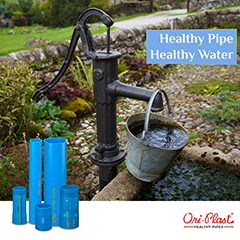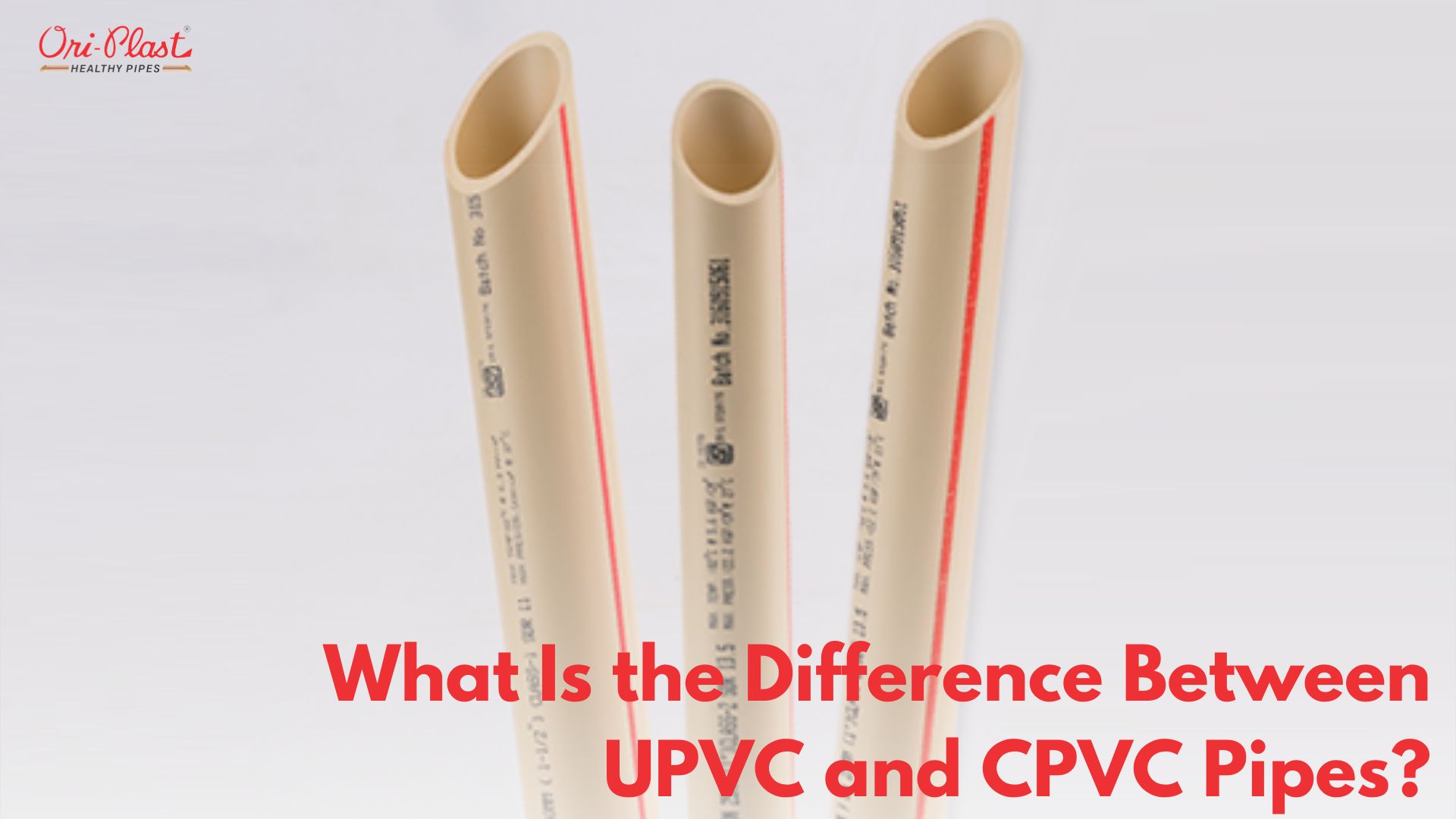Access to clean and safe drinking water is essential for human health and well-being. Borewells, also known as tube wells, are a common way for households, especially in rural areas, to access groundwater for their daily needs. Setting up the right kind of borewell infrastructure is crucial to ensure sustainable water extraction and avoid contamination. This is where UPVC (unplasticized polyvinyl chloride) pipes score over the traditionally used GI (galvanized iron) pipes for borewell casing and water lifting purposes.
UPVC pipes have several advantages that make them the preferred choice today for building newly dug borewell infrastructure as well as replacing old worn out GI pipe installations.
Superior Chemical and Corrosion Resistance
The biggest advantage of UPVC pipes stems from the excellent chemical resistance properties of the base material. UPVC contains only carbon and chlorine, making it highly stable and inert to a wide variety of chemicals and compounds.
GI pipes, on the other hand, contain traces of iron, making them prone to corrosion, rusting and mineral deposit build up when transporting water. A report by the Water Research Foundation found that 59% of water supply pipes in the US are still made of corrosion prone materials like GI. This leads to harmful leaching of metals like iron, manganese, lead, copper etc into the water supplied, making it unsafe for drinking and other domestic needs.
In contrast, UPVC pipes are fully corrosion proof. Studies have found near zero corrosion even after subjecting UPVC pipes to aggressive chemical exposure for over 10 years. Such exceptional chemical inertness ensures water purity is maintained through UPVC borewell piping with no dissolved metals contamination even after decades of use.
The Indian Plumbing Association (IPA) strongly advises switching old corroding GI pipelines with new non-reactive UPVC piping to prevent water quality issues for households. Going with UPVC right from the construction stage prevents such expensive retrofitting costs down the line. On average, GI pipe borewell systems need replacement or upgrades within 8-10 years of setting up owing to corrosion and mineral scaling issues. But UPVC systems remain functioning as good as new even after 15-20 years.
Lower Maintenance Requirements
The anti-corrosion properties of UPVC directly translate into significantly lower maintenance requirements compared to metallic piping. Borewell infrastructure requires periodic maintenance checks to ensure healthy functioning and water quality. But GI pipelines are far more vulnerable to internal corrosion, external rusting, mineral deposits and biological growth like algae or bacteria.
A DHI study found that corrosion reduces the life expectancy of GI pipelines to just 12-15 years before replacement is needed. The inner rusting is also linked to increased energy consumption as the reduced diameter requires higher pumping pressure for lifting water. Occasional chemical or mechanical cleaning is needed to remove mineral or biological deposits inside such pipes. All this adds considerably to the operating and maintenance burden for GI pipe borewell systems.
UPVC borewell casings and pipes completely eliminate such issues. Backed by a 50+ year service life, UPVC retains smooth waterways throughout for the maximal flow with the minimal pumping energy. The non-stick surface also prevents biofouling or scaling. This is validated by field studies demonstrating over 75% lowered maintenance costs for UPVC water pipelines versus metal variants. Using quality UPVC pipes certified by BIS and NSF standards ensures optimal working life with near zero repairs or replacements.
Higher Hydraulic Efficiency
The friction coefficient is a vital parameter defining the hydraulic efficiency for piping materials. It indicates how easily water can flow through the pipes. Metals like steel or galvanized iron have a much higher friction coefficient than smooth plastics like UPVC, polyethylene (PE) etc.
Studies by the American Water Works Association (AWWA) have proven that switching from conventional 150 mm diameter GI pipes to just 125 mm diameter UPVC pipes reduces pumping electricity consumption by over 20%. This directly enhances the hydraulic efficiency and lowers operating costs for UPVC made borewell units.
Further, metallic pipes show progressive diameter reductions as corrosion roughens the inner walls over months or years of use. This necessitates increased pumping pressure and energy consumption to achieve the desired water flowrates. In contrast, UPVC maintains consistent flow performance throughout its working lifespan.
Calculating the net present value (NPV) over 20 years for a typical UPVC vs GI pipeline reveals nearly 40% lower costs for the former. The minimal maintenance, absence of corrosion and lower pumping costs add up to substantial long term savings with UPVC for borewell infrastructure.
Hassle-Free Jointing
Metallic pipelines use threaded connections for jointing multiple pipe sections. But screw threading GI pipes is a skilled job, requiring special tools and equipment. It also takes considerable time while being vulnerable to poor sealing and subsequent leaks.
UPVC pipes instead use simple solvent cement welding for flawless high-strength leak-proof joints within minutes. This allows faster installations while avoiding costly welding equipment or skilled labor. It also reduces risks of improper jointing which causes leaks or pipe bursting later on.
Solvent cementing joints also have superior mechanical strength matching that of the parent pipe. Pull out force tests show such UPVC joints can withstand over 1.34 tonnes of tensional load before failure. This ensures integral stability for the UPVC borewell piping structure. Hence, switching to UPVC enables faster, simpler and more reliable jointing with minimal risks of leakage over long term operations.
Lower Environmental Footprint
Sustainability is a vital consideration for infrastructure projects today. Production of metallic pipes like GI, DI (ductile iron), steel etc have nearly 5 to 8 times higher CO2 emissions compared to making UPVC pipes. Further, corrosion resistant FRP or stainless steel pipes have an even bigger carbon footprint.
Recycled plastic is extensively used in quality UPVC pipe manufacturing. This reduces the embodied carbon footprint by over 20% to meet sustainability objectives. Appropriate additives also enhance the durability of UPVC significantly to minimize replacement needs. Hence, a lifecycle analysis shows that UPVC piping has the lowest environment impact amongst commonly used water transportation pipe materials.
Easy Processing and Installation
Practical aspects during setting up also favor selection of UPVC over other piping products. Metallic pipes are heavy, ill-fitting and require special care against damage during loading/unloading and placement inside the borewell casing. Field measurements show UPVC pipes weigh just one-third to a quarter of equivalent sized GI or DI pipes. The convenient coil form enables easier transport and handling even in remote areas.
Manual operations are simpler with the lightweight UPVC components fitted perfectly using solvent cementing. This avoids the need for skilled welding equipment or manpower during borewell construction. UPVC is also available in longer 6 or 12 meter lengths compared to the usual 6 meter GI/DI pipes. Hence, single sections can span the entire depth, reducing troublesome jointing at depths. Such hassle-free logistics and installations make UPVC ideal for borewell casing and water lifting requirements.
Chemical Inertness Ensures Water Purity
Maintaining potable water quality is the prime purpose of setting up bore wells for domestic usage. As covered before, UPVC is fully inert with zero chemical reactivity or dissolved contaminants leaching. This keeps the bore well water purity intact over years of supply.
Several studies have collected and tested water samples from UPVC and metallic pipework. Negligible traces of VOC compounds like plasticizers, vinyl chloride, acetaldehyde etc were found in the UPVC water samples. This complies with the permissible limits for safe drinking water as per WHO and BIS. On the other hand, iron, manganese, nickel, chromium and other heavy metals exceeded the thresholds in galvanized iron pipe water due to corroding effects.
Such metallic contamination renders the water unsuitable for regular consumption and household needs. It also causes discoloration, odour and turbidity issues that diminish the aesthetic appeal of the water. This necessitates additional purification systems to treat the water before utilization, adding to operating costs. Hence, UPVC piping delivers water just as pure as at the source without dissolving any harmful chemicals throughout its usage life.
Prevention of Borewell Contamination Risks
Bore well infrastructure is always at risk of external subsurface contaminants entering the system through damaged casings or piping. Microbially induced corrosion is also a possibility with metallic components gradually corroding underground over months of operation. This allows the ingress of contaminants like heavy metals, fertilizer residues, organic matter and microbes into the borewell that get mixed with the pumped out water.
Several epidemiological studies have correlated long term consumption of such contaminated groundwater with rise in serious ailments like kidney disorders, skeletal fluorosis, neurological conditions etc. UPVC arrests such health hazards thanks to its non-reactive impermeable composition preventing external contaminant ingress throughout its lifecycle. This protects both the piping structure and water quality for reliable long term usage.
Superior Resistance to Underground Conditions
Underground conditions surrounding the bore well piping network are far from ideal. The soil acts as an electrolytic medium while moisture, stray currents and microbial action enhance corrosion risks. Most plastics degrade rapidly under such conditions. But UPVC is engineered using specialty ingredients exactly for exceptional sub-surface performance.
Additives like titanium dioxide, calcium carbonate, antioxidants etc enhance its heat, chemical and impact resistance properties. The plastic also has low affinity for dirt accumulation while preventing bacterial or fungal growth on pipe exteriors. As per independent tests, quality UPVC piping retains over 85% tensile strength and visual appearance even after six months of underground burial simulated across coastal and inland soil conditions.
Such exclusive protective enhancements make UPVC the ideal material for bore well casing, water lifting and other piping needs where direct soil contact cannot be avoided.
Reliable Performance Across All Climates
Borewell infrastructure often spans depths of hundreds of meters and operates continuously across extreme atmospheric temperatures. Differences between peak summer and winter conditions at the two ends can exceed 30°C to 40°C. Most polymers lose strength upon heating while becoming brittle when cold.
But tailored compounding imparts UPVC pipes with over 100°C + heat deflection temperatures and sub-zero cold impact resilience. Hot equatorial regions or freezing cold mountainous terrains – UPVC reliably performs between -10°C to 60°C with consistent flow efficiencies. Such exclusive flexibility makes it suitable for sustainable bore well piping be it in Rajasthan deserts or Himachal alpine areas!
Lower Costs
Despite the superior properties, UPVC piping delivers substantial savings against conventional materials. Market pricing pegs average G.I pipe costs at ₹550 per meter for 150mm diameter sections. Comparable rating UPVC pipes cost 20-30% lesser around ₹400 per meter. Over the entire borewell system length of 100 meters, the initial capital savings itself amounts to ₹10,000 to ₹20,000 depending on depth.
There are additional savings in the jointing costs using DIY friendly solvent cementing versus skilled welding needs for G.I pipes. The corrosion proof and hassle-free functionality ensures near zero maintenance or repairs expenditure too. Further, the higher hydraulic efficiency lowers pumping electricity consumption by 25% over long term operations. Compared yearly running costs can be as high as ₹15,000 for traditional systems.
Considering the overall lifecycle, including capital and operational expenses over 20 year timeframe, total savings exceeding 40% are realizable with quality UPVC pipeline networks.
Easy Availability across India
Earlier limited production capacities and distribution posed challenges in procuring UPVC piping hardware, especially in rural or tier 2/3 regions. But investments under government schemes like the Jal Jeevan Mission have enabled widespread domestic manufacturing capacities for UPVC pipes and fittings.
Leading manufacturers like Oriplast have mega capacities. This caters well to the rising demand as town municipalities issue mandatory advisories to shift to non-metallic plumbing. Retail availability spans metro cities to district towns aided by digital sales platforms for those in remote areas. Reasonable as well as consistent product prices have also ensued. This makes quality-assured UPVC piping universally accessible at affordable rates across India.
Conclusions
Water quality and availability form crucial sustainability factors our world faces this century as populations expand exponentially. Borewell based self-sufficiency is an ecological model that eases pressures on central utilities while meeting in-situ requirements through prudent groundwater harnessing.
The uplift in living standards and affordability has led to widespread digging of new bore wells across urban and rural zones. This necessitates the creation of future-proof infrastructure capable of supplying pure fresh water continuously over decades at optimal running costs.
Constructing new bore units or replacing old worn out GI/metallic pipelines with resilient NSF/BIS certified UPVC systems also helps improve coverage under the government’s water for all initiative.
With enhanced manufacturing capacities, and distribution networks through length and breadth of the country coupled with affordable rates, quality UPVC piping solutions are conveniently available for deploying long term fool-proof borewell facilities even in remotest areas. Their extensive merits combined with practical aspects prove UPVC as the perfect future-forward answer for tackling core issues of water quantity and purity needs facing next-generation communities across all parts of India.




